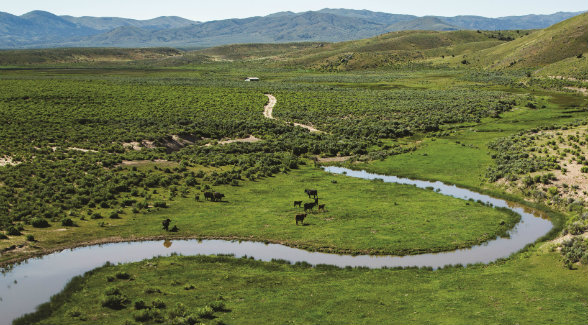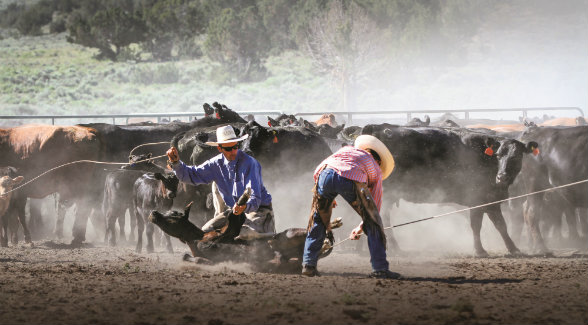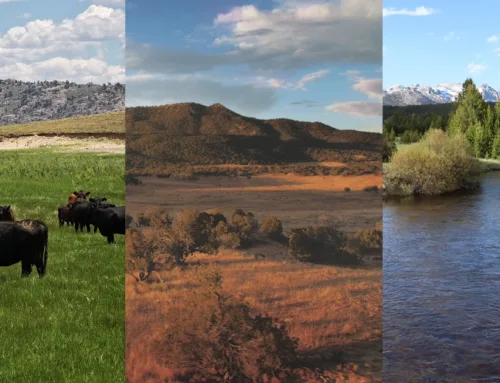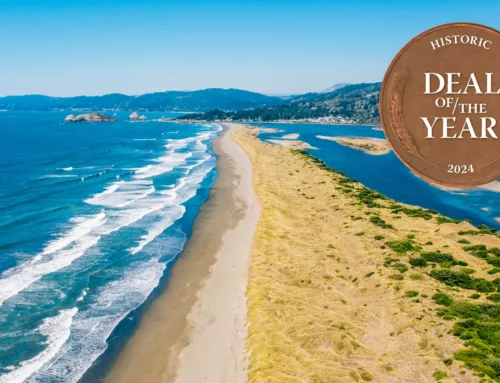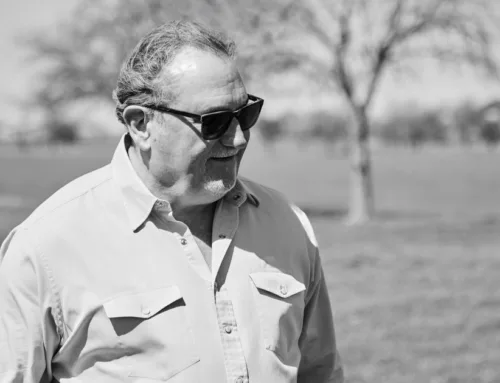The American Landowner: James Rogers
The American Landowner: James Rogers
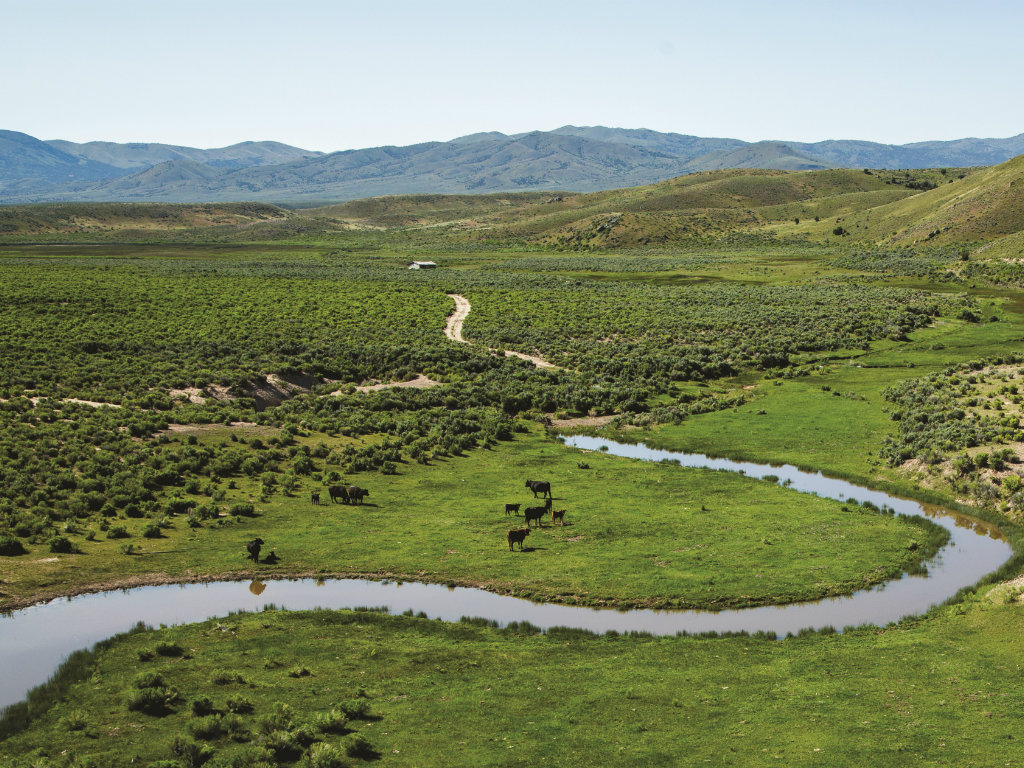
WinecupGambleRanchNVa_fi
“To be honest, the tough conversations have made us better a landowner.” – James Rogers
Text by Lesli Allison | Photography by David Packer and JD Hunter
Sprawling across the very heart of buckaroo country, the Winecup Gamble Ranch encompasses a checkerboarded landscape of 984,000 acres, more than half of which is owned by the public and managed by the Bureau of Land Management (BLM). It’s as wide and wild and complicated a landscape as there is in today’s West. It’s also a place where flat-topped hats and spurs dominate in a cowboy culture that prizes independence and self-determination. Yet in the midst of this sagebrush rebellion territory, some surprising things are happening.
“If we’ll take care of this land, it will take care of our cows,” says Winecup Gamble ranch manager James Rogers. “And we can’t do it alone. We’re in true partnership with the BLM. There’s still a lot of strife in many places between agencies and ranchers. But when we focus on finding common ground and taking care of the land together, then the body condition of our cows and our checkbooks just got better.”
The Winecup Gamble is a member of the Stewardship Alliance of Northeast Elko (SANE). “We like that acronym, Rogers says, “It makes for some fun.” SANE is a collaborative group established in 2013 and comprised of eight landowners who have 1.7 million acres under fence, plus a slate of state and federal agencies and the nonprofit Pheasants Forever. SANE formed in large part out of concern about a potential federal listing of the greater sage grouse, yet it has moved far beyond that to successfully collaborate on a number of land management and conservation efforts.
“We collectively think about managing across fence lines. We don’t agree with every landowner or every perspective of agencies but we have a healthy, respectful dialogue,” James says.
This same attitude characterizes the ranch’s approach to other challenges as well. For example, the ranch has a rock spring and wet meadow that was an historic watering hole along the famed California Trail. Over the decades, cattle had destroyed the area around the spring. Trespassing hunters and campers repeatedly left the place trashed. So the ranch partnered with the U.S. Fish and Wildlife Service and the Nevada Division of Wildlife to fence off and protect the wet meadow and spring. A spring box was used to run a pipeline from the spring to a more strategic location for livestock. They even keep a trickle going for wildlife. The ranch also got permission from Elko County to install cattle guards on the road so people could pass through the protected area easily. The ranch then went a step further. Even though the area surrounding the spring is part of the Winecup Gamble’s deeded holdings, they made it available to continued public use, but in a more managed way.
“It’s not that we didn’t want people to be there, but we wanted people to take care of it. Rather than keep people out, we posted a sign saying guests are welcome with prior registration. Then we know who is there, and there is some amount of accountability. It’s been a really good thing. We still do a wagon out on the range with our cowboys and occasionally stay there ourselves. Now that it’s cleaned up, it’s been a win for us as well,” James says.
As with many ranches in the West, hunting season can be a challenge on the Winecup Gamble. “Our property is intermingled with BLM, so we can’t keep hunters out of our deeded portions. It gets frustrating when the public leaves gates open and trash all over the place. It’s really difficult to have a lot of respect for that type of behavior. But the truth is, it’s about 10 percent of people who make the rest look bad, so I’ve taken a proactive approach to communication. The biggest and most rewarding tool that we’ve used is that in the fall, when we get the most traffic onto the ranch, we send out a letter to every single license holder who has drawn in the area. We sent out 1,900 letters last year. We congratulate them for their tag, let them know we appreciate outdoorsmen and love to hunt and fish ourselves, and that we value their hobbies. Then we tell them that in case they haven’t been on this landscape, it is intermingled public and private land. We ask several very simple things of them: please close gates, pick up trash, don’t drive roads when muddy, and drive slowly through headquarters because we have kids and pets. We invite them to stop in and to let us know if they have any troubles. Then we provide a map showing access points. I can assure you that this does a whole lot, much more than anything else we can do. We also are involved in the Wounded Warriors program. The ranch donates five youth cow tags and allows those five youths to hunt by appointment on the one locked portion of the private property. Those things have really changed how people see us. Being generous where you can be generous goes a long way.”
The ranch applied a similar win-win strategy to another situation. One day while out hunting with the owner on a private portion of the ranch, their hunt was interrupted. “Here comes this side-by-side in the middle of this epic hunt with a bugling elk,” Rogers recalls. “It really disgusted me. This was private land, but even had it been public space, it was really unethical for this side-by-side to be off the road. So I went to the Department of Wildlife and said I wanted to close the area off to motorized vehicles. So far, a lot of the public is really excited because it creates this safe place where they can get away from ATVs, too. Even though it’s private, we still provide access. But now you can’t come in with motorized vehicles. The hunters who value that non-motorized area have said they will help police it for us. That’s really helpful because it is in a remote area and hard for us to monitor.”
James admits that there will always be problems and a desire for more privacy. On the other hand, the ability to ranch in this vast open space provides many benefits which would otherwise not be available. “I’ve been on the smaller, entirely deeded ranches that didn’t have this much space, and there are challenges there too. I also think we’re relational as people, and having public space forces us into relationships which sometimes can be challenging but are more often rewarding. This public interface challenges us as human beings to make better relationships. My relationships with my wife and kids are better from learning more about how to work with others. We’re made to be with other people, not just on our own mountaintops where we lock the gate to be with our own. I think that’s kind of shallow.” He also believes that while working with public agencies can sometimes be challenging and frustrating, it too has a positive side. “To be honest, the tough conversations have made us a better landowner,” he says.


